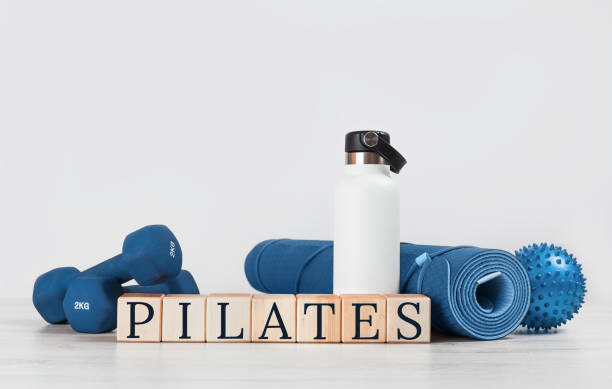Pilates, a form of exercise that emphasizes the balanced development of the body through core strength, flexibility, and awareness, has garnered a significant following due to its effectiveness and adaptability. Unlike some forms of exercise that require minimal equipment, Pilates can involve a variety of apparatuses designed to enhance the workout. Understanding the different types of Pilates equipment can be crucial for both beginners and seasoned practitioners looking to deepen their practice.
Understanding the Pilates Method
Before diving into equipment, it’s essential to grasp the principles behind the Pilates method. Developed by Joseph Pilates in the early 20th century, the exercise system focuses on mindful movement, alignment, breath control, and the central concept of ‘The Powerhouse’ – the area of the body that encompasses the lower back, abdomen, hips, and buttocks. While Pilates can be practiced effectively on a mat with no equipment, the use of specialised apparatuses can further enhance the experience.
Mat-Based vs Equipment-Based Pilates
In mat-based Pilates, the resistance is primarily provided by the practitioner’s own body weight. This form of Pilates is accessible, easy to perform anywhere, and focuses on core strength. Conversely, equipment-based Pilates involves specific machines that add resistance through springs and pulleys. This resistance challenges the body and can be adjusted to suit different strength levels and training goals.
The Reformer: The Centrepiece of Pilates Equipment
The Reformer is perhaps the most recognisable piece of Pilates equipment. It consists of a sliding carriage, springs for adjustable resistance, straps for hands or feet, and a foot bar. The Reformer facilitates a wide range of movements and can be used for both resistance and assistance, making exercises more challenging or more accessible, depending on the user’s needs.
Cadillac or Trapeze Table: Versatility and Range
Another staple in Pilates studios is the Cadillac, also known as the Trapeze Table. Equipped with bars, straps, springs, and a canopy structure, the Cadillac supports a variety of exercises that can be performed lying down, sitting, standing, or even hanging. It is particularly beneficial for rehabilitating injuries, as it allows for movement and stretching without placing undue stress on the body.
The Pilates Chair: Compact and Multifunctional
The Pilates Chair, or Wunda Chair, is a compact device that consists of a seat with springs attached to a pedal. It’s often used to perform exercises that challenge the legs and arms while engaging the core. The chair’s functional design makes it suitable for small spaces, and it provides a hearty workout despite its relatively simple appearance.
The Barrel: Enhancing Flexibility and Mobility
Barrels, which come in various sizes such as Spine Corrector, Ladder Barrel, and Small Barrel, are designed to support the spine’s natural curves and facilitate movements that enhance flexibility and mobility. They are particularly useful for exercises that aim to extend and stretch the body.
Pilates Rings and Balls: Subtle Yet Effective
Smaller Pilates accessories such as rings (also known as magic circles) and balls can be utilized to create gentle resistance and to target specific muscles during exercises. These tools can enhance mat routines, improve muscle tone, and are excellent for core stabilization.
Finding the Right Pilates Equipment Provider
When looking for high-quality Pilates equipment, it’s important to choose a provider that understands the needs of the Pilates community. A reputable provider will not only offer a range of equipment but will also ensure that each piece is designed with precision and durability. For example, those looking to equip their at-home studio or commercial gym might be interested in exploring The Core Collab US, a trusted supplier of Pilates apparatuses and accessories.
Considerations When Choosing Pilates Equipment
Before investing in Pilates equipment, consider the following:
- Space: Measure the space available to ensure the equipment will fit comfortably and safely.
- Budget: Pilates apparatuses can vary in price. Determine a budget that reflects your commitment and goals.
- Functionality: Assess whether the equipment serves the exercises you intend to perform.
- Durability: Choose equipment made from high-quality materials to ensure longevity and safety.
Training and Education
Operating Pilates equipment requires proper training. Beginners should seek instruction from certified Pilates instructors to learn safe and effective use of the machines. Advanced practitioners also benefit from ongoing education to deepen their knowledge and refine their techniques.
Conclusion
Understanding and utilising the right Pilates equipment is essential to enhancing the practice of Pilates. Whether performed at home or in a studio, the range of apparatuses available can contribute to a more varied and stimulating routine. Ultimately, quality equipment, such as that available from providers like The Core Collab US, forms the backbone of a successful and satisfying Pilates regimen.
Always remember to consult with a professional before making any significant changes to your exercise routine, especially when incorporating new equipment. With the right guidance and high-quality apparatuses, your journey into the world of Pilates is sure to be both enriching and enjoyable.



